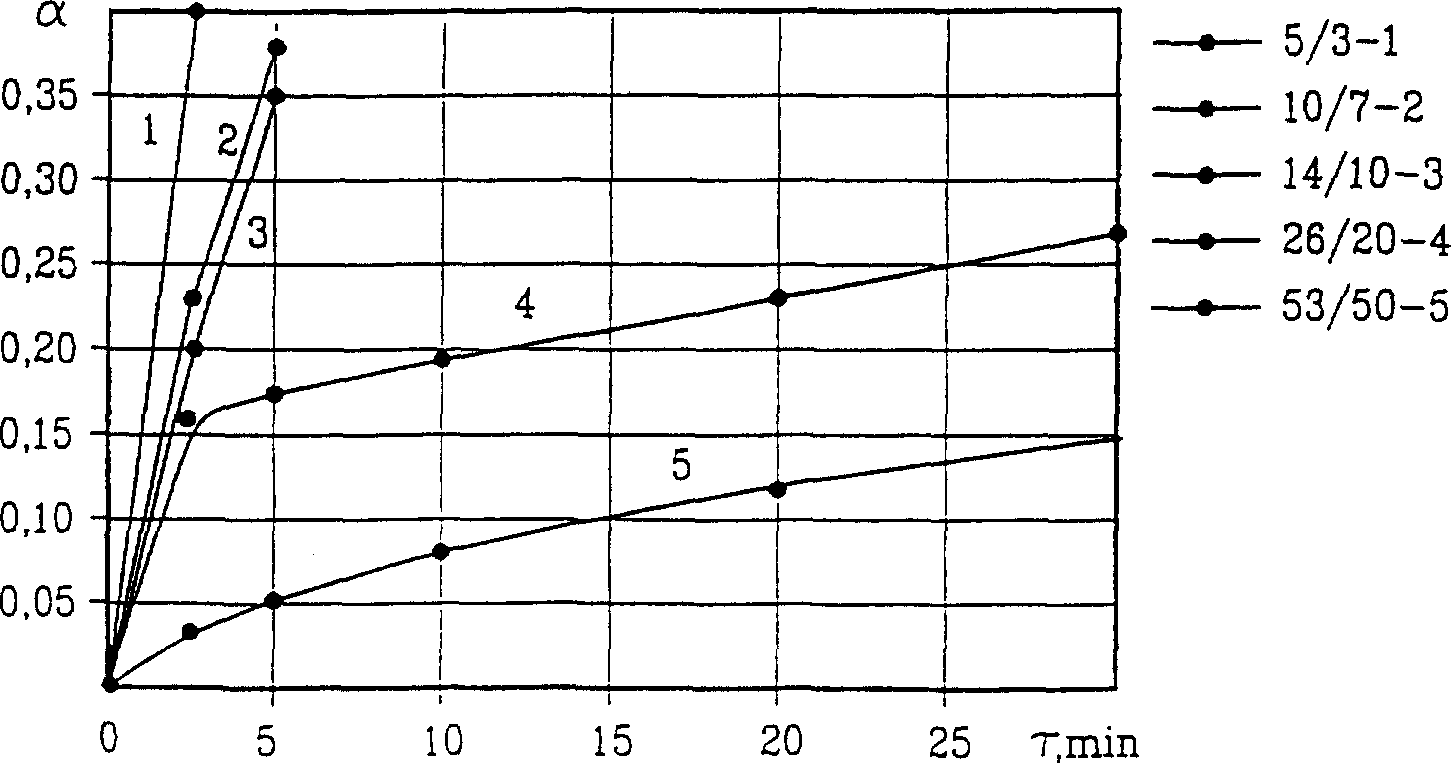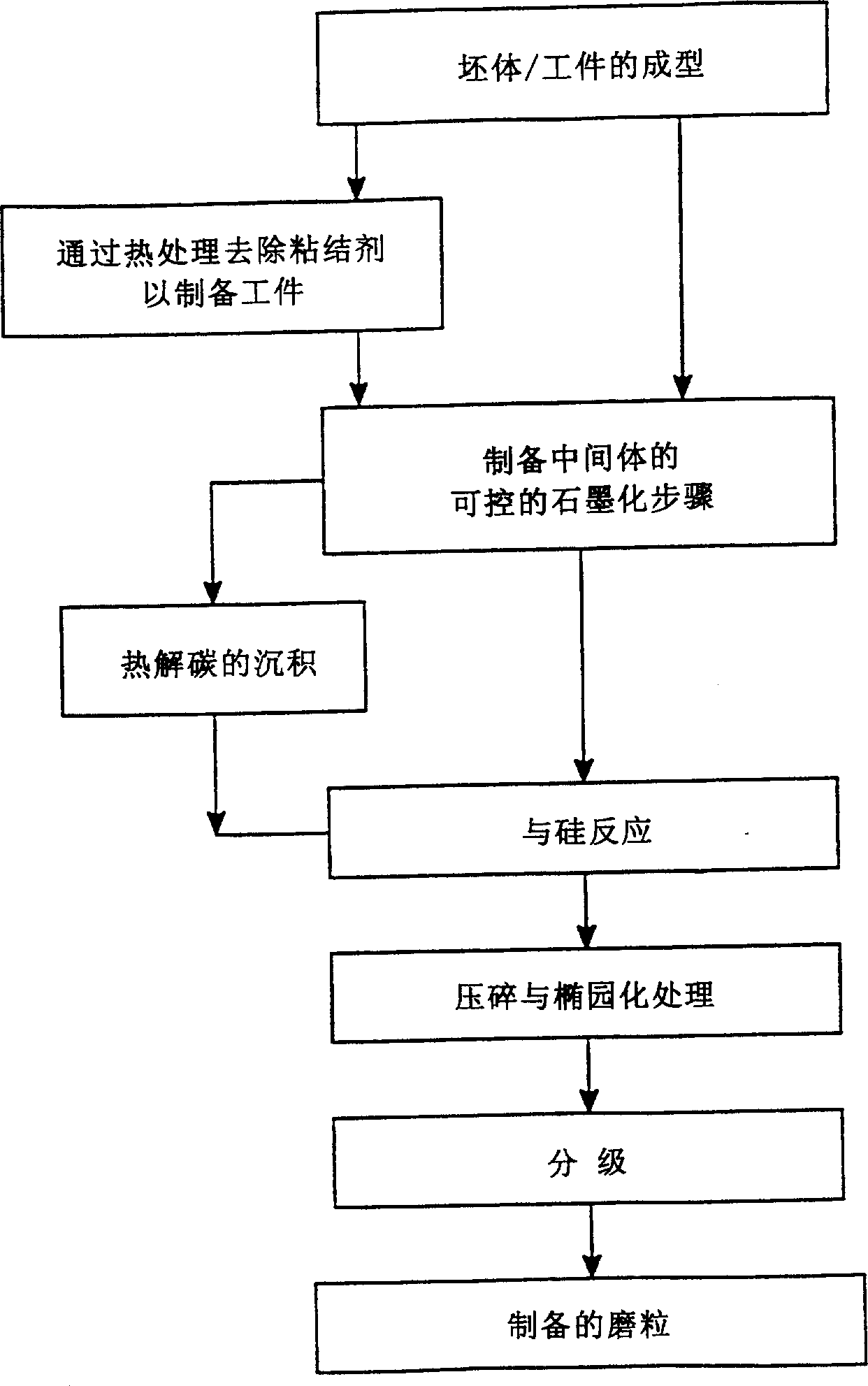Method for producing abrasive grains and abrasive grains produced by this method
A technology for abrasive grains and diamond particles is applied in the field of abrasive grain preparation, which can solve the problems of inability to prepare, low strength, and application limitations.
- Summary
- Abstract
- Description
- Claims
- Application Information
AI Technical Summary
Problems solved by technology
Method used
Image
Examples
Embodiment 1
[0157] Cylindrical samples (φ = 20 mm, h = 3 mm) were prepared from diamond powder of type ACM 10 / 7. The diamond was mixed with a binder consisting of a 25% solution of phenolic resin in ethanol to obtain a mixture. The amount of dried resin was 2% by weight of the diamond powder mass. The mixture was stirred thoroughly and sieved through a sieve with a particle size of 200 μm. The sample was molded by pressing under a force of 45 kN using a metal mold at room temperature. The body obtained was taken out of the mold and kept in the atmosphere at room temperature for 10 hours, after which it was dried at 70° C. for 1 hour and hardened at 150° C. for 1 hour.
[0158] The prepared workpiece contained 98% by weight diamond and had a porosity of 51% by volume. The workpiece was heat-treated at 1550° C. for 3 minutes in a vacuum (pressure of 0.1 mmHg column). This treatment reduced the diamond content of the intermediate body by 15% by weight.
[0159] The intermediate body was...
Embodiment 2
[0168] ACM-40 type diamond powder (a homogeneous mixture of diamonds with a size of 1-40 μm) as shown in Example 1 was prepared into cylindrical samples. The prepared sample contained 43% by volume diamond, 39% by volume silicon carbide and 18% by volume silicon, and the Young's modulus of the material was 560 GPa.
[0169] Ovalized and non-ovalized abrasive grains, and an abrasive paste were prepared according to the same method as in Example 1. The same test as in Example 1 was performed on the abrasive grains and the paste. The test results are shown in Tables 1-3.
[0170] sample
[0171] The results in Table 1 show that the static strength and dynamic strength of the obtained abrasive particles are high. The abrasive grains are characterized by their high resistance to dynamic effects. The dynamic strength increases with the increase of abrasive particle size.
[0172] The static strength of the 500 / 400 grade abrasive grains treated by ovalization is equival...
Embodiment 3
[0176] On the basis of the abrasive grains prepared in Example 2, two 12A2-45 with conventional abrasive percentages of 25% by volume were produced I Type (size 125×10×3×32) spherical grinding wheel. For the production of the grinding wheels, abrasive grains in the size range 160 / 125 μm and an organic binder B2-01 (manufacturer: Superhard Materials Institute, Kiev, Ukraine) were used.
[0177] Using the grinding wheel pair sintered alloy T15K6 (79%WC, 15%TiC, 6%Co) (tungsten carbide) and steel P18 (0.7-0.8%C, 17-18.5%W, 0.5-1.0%Mo, 3.8- 4.4% Cr, 1-1.4% V) Grinding tests were carried out. The test results are shown in Table 4.
[0178] Parameter
Sintered alloy T15K6
Steel P18
Relative Consumption of Grinding Wheels
1.2-1.6mg / g
0.7mg / g
Surface roughness after machining
1.25μm
0.8-1μm
Grinding power
1.5-2.0kW
1.7-2.0kW
[0179] The conclusions drawn from the examples are:
[0180] 1. The prepared abrasive g...
PUM
| Property | Measurement | Unit |
|---|---|---|
| Young's modulus | aaaaa | aaaaa |
| Young's modulus | aaaaa | aaaaa |
| Porosity | aaaaa | aaaaa |
Abstract
Description
Claims
Application Information
 Login to View More
Login to View More - R&D
- Intellectual Property
- Life Sciences
- Materials
- Tech Scout
- Unparalleled Data Quality
- Higher Quality Content
- 60% Fewer Hallucinations
Browse by: Latest US Patents, China's latest patents, Technical Efficacy Thesaurus, Application Domain, Technology Topic, Popular Technical Reports.
© 2025 PatSnap. All rights reserved.Legal|Privacy policy|Modern Slavery Act Transparency Statement|Sitemap|About US| Contact US: help@patsnap.com



